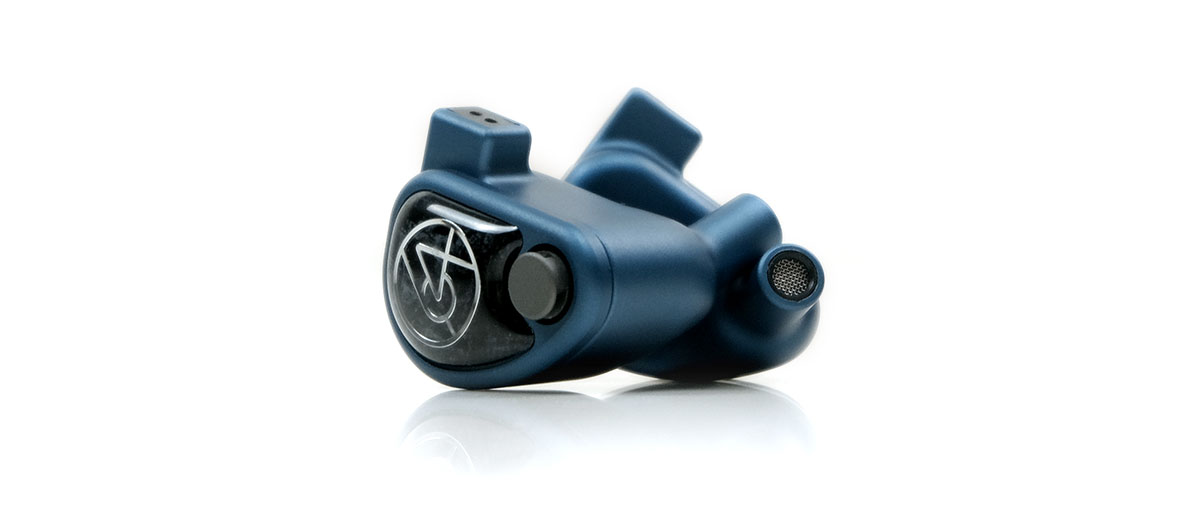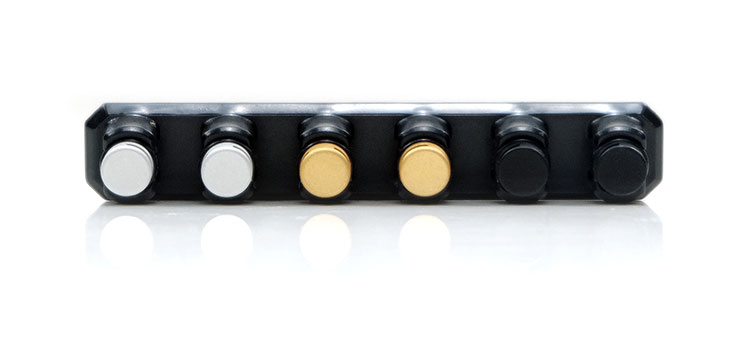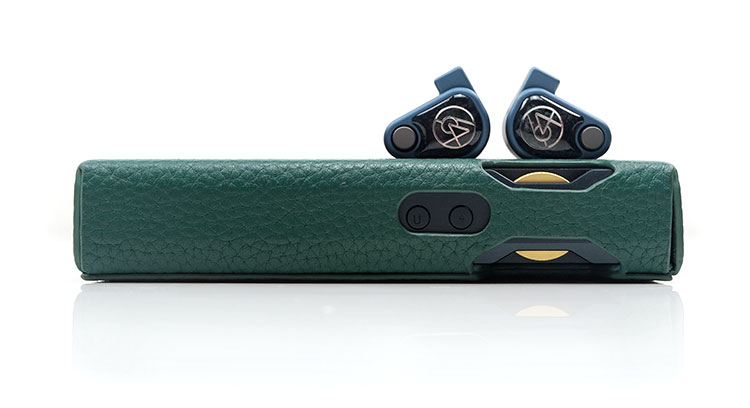Sound Impressions
The following impressions were completed using the HiBy RS8, Cayin’s N8ii, and the Questyle M15 Dongle, (attached to a Huawei Mate Xs2) as the main sources. The U4s itself was equipped with SpinFit stock tips and cable.
Summary
The U4s is a big upgrade on my older U4 SE. The change from BA to dynamic for the lows and the introduction of a tia high not only stretches and deepens the soundstage but also improves the clarity and airiness compared to its predecessor.
This is a monitor with a focus on delivering a deep and powerful bass response but it also hits very differently from what came before. The slam is tighter, more impactful, and with a better level of separation from its midrange presence.
It’s less warm than I was expecting, not so much mid-bass bloat or bloom. I dare say it perhaps edges closer to a neutral coloration the further up in the frequency response you go. Especially so when compared to the likes of the U6t and the Duo which offer a thicker more rounded quality to their respective midrange performances.
I suspect the cleaner BA and tia high driver arrangement is a contributing main factor for that and you will pick up a little on the driver timbre contrast. Overall, it’s very nicely balanced with a tastefully tuned bump in its pinna gain amplitude to counter those firm lows.
It is also an easy-to-drive monitor but I do suggest feeding it as much Vrms as it can handle because that dynamic driver responds really well to quality power. Particularly with a good quality balanced output from a DAP or dongle, it will tighten up considerably sounding more articulate in the process.
Frequency Response
The U4s is less dramatically V-shaped and further refines the direction first taken with the U4 SE with a tuning that is a little more balanced across the FR than what came before.
You get a strong sub-bass lift with that dynamic driver up to about 60Hz then it gradually drops with less mid-bass emphasis and a stronger scoop through the upper-bass and into the lower mids. That will deliver a clearer level of separation from bass to mids and less warmth coming up into the midrange timbre.
You get some really excellent low-end power and proper fundamentals that should please most casual bassheads but with enough clarity to keep serious enthusiasts happy at the same time.
The lower-mids is scope from around 400-500Hz to about 800-900Hz so instrumental presence there will be pushed back a little and sound a little on the leaner side. Pinna gain from 1-4k is actually very nicely done. It’s not too elevated but clearly enough to counter the low-end weight to keep everything nicely balanced out.
One of the key differences between the U4s and the likes of the Duo and the older U4 SE is a stronger upper mids presence around 4-5k. This will tease out a bit more treble overtones and some additional vibrancy to the percussion timbre.
The U4s retains some nice energy with a secondary bump around the 8k marker. It’s just enough for higher-pitch notes to resonate clearly in the mix but not to the point where it starts to sizzle or sound off. You will get a substantial improvement in treble clarity over the U4 SE and even more headroom over the U6t for my money.
Timbre
One thing to be clear about is this is not a warm or dark-sounding monitor. The U4s is very clear and clean towards the upper-mids and highs from the BA and tia driver combo with a firm and dense sounding low-end from that dynamic driver.
There is plenty of power so bass notes deliver an excellent fundamental. That dynamic driver runs rings around the original BA woofer design from the U4 SE sounding way tighter, with more character in the notes, and surprisingly articulate also.
It’s not a punchy tone though, there is a reduced mid-bass emphasis, with less bloat and warmth also, as well as a stronger level of separation from the lower mids. That sub-1k scoop will take a little bit of body and texture off instruments registering on the low end of the U4s midrange.
The pinna gain is nicely judged. You get a little more neutrality on the vocal and percussion, and a little bit more shine from the treble tuning but not too much to the point where sibilance and splashiness become an issue.
It’s not a harsh midrange tone, but neither is it soft or rounded. However, owners of the U6t and Duo will find it more on the brighter side with a drier shorter note decay compared to that dynamic driver low end.
Staging & Dynamics
With the right level of Vrms, the U4s does exceptionally well in terms of dynamic range and imaging. The dynamic driver can reach deep, very deep but importantly it has plenty of space with very little bloat and bloom to sound clear and well-defined below 100Hz.
The mid-bass punch pulls back a bit as does the lower mids presence compared to the likes of the U6t so it might not be quite as well suited to fleshing out guitar plucks from rock classics or lower pitching vocal performances.
It is not as wide or as airy nor is the pinna gain quite so forward positioned as something like the open-back Duo. However, I actually find the resolution and accuracy of the U4s midrange imaging to be of a higher level with those additional BA drivers adding some welcome articulation and detail.
The tia high gives the U4s a relatively tall-sounding monitor. It’s definitely an airier presentation than what I was expecting and find it preferable to the headroom offered by the U6t which is relatively relaxed sounding.
Filters
If you want to increase the U4s bass presence and maybe introduce a little more mid-bass warmth then the m20 module will give you that. It will soften the timbre in the mids and reduce the relative staging width so not quite as balanced or as open-sounding as the m15 but a more forgiving tone overall with bright mixes or sources.
The m12 is probably the most interesting to existing 64 Audio monitor owners. And yes, it’s weightier than the mX for sure but less sub-bass dominant compared to the m15 with a bit more mid-bass punch present.
This one feels the most balanced of the 4 supplied filters. It still digs deep when required but it’s not overpowering and allows a bit more space for the lower mids to come through also.
The mX tilts the U4s closest to neutral with the mids and highs taking center stage. The bass response is a bit too mild for me though not flat by any means. Rather, why would you buy the U4s if your goal is to suck out the bass response.
It doesn’t sound unnatural though, rather just sounds like a different IEM with plenty of headroom but not a huge amount of depth or power.
Synergy
Efficiency
The 64 Audio U4s is rated at dB/mW @ 1kHz @ 1mW (94mV) so not too sensitive but easy enough to drive from most DAPs and some good quality dongles, even on a low gain setting.
Personally, I would pick a balanced output pairing and if possible grab the stock cable with a 4.4mm output as that dynamic driver sounds a lot snappier and tighter with a stronger level of Vrms going through it.
It does not have to be an uber-expensive DAP either to get the low-end moving nicely. The 4.4mm output of the Questyle M15 has a very impressive level of dynamic range and would be an easy pick for a daily pairing on the go with an OTG-compatible smartphone.
Compared to alternative monitors in the 64 Audio lineup using a low gain balanced output on the LP P6 Pro, it’s just a shade less sensitive compared to the all-BA configured U6t and quite a bit more sensitive than the open-back hybrid dual driver Duo.
The lack of noise being picked up by the U4s means stronger amplification will produce no background noise on all our tested DAPs with the stock SE terminated cable.
Reverting to 64 Audio’s Premium 8-braid cable with its balanced jack, DAPs like the older HiBy R8 had a suitable black background even when in high gain turbo mode.
Pairings
I tested a mix of DAPs and dongles with the 64 Audio U4s using both the SE and balanced outputs. This includes the HiBy RS8, Cayin’s N8ii, and their RU6 dongle, the LP P6 Pro, and the Questyle M15 dongle.
Combining my efficiency recommendation from above I would opt for a more neutral tone but with strong dynamics from a balanced output source rather than a single-ended pure tube or warm source sound signature.
As much as possible you want that dynamic driver to sound snappy and well-defined rather than soft and flabby in its output as that, combined with the tia high driver, are the stars of the show.
For example, the HiBy RS8 SE output with Turbo Mode turned off is not as engaging without the additional Vrms supplied via Turbo Mode and it’s 4.4mm balanced out. The U4s low-end sounds far more articulate and dynamic whereas the SE alternative lacks a bit of urgency.
I got a similar result from the Cayin N8ii using its P+ mode which produced a more satisfying and vivid performance from the U4s compared to it being switched off. Without it, the U4s loses a lot of depth to its presentation becoming a little more mid-centric and thinner sounding in the process.
I also felt the tia highs got a little softer in some of the SE outputs compared to the balanced counterpart. For example, the Q15 dongle delivered more headroom and treble presence compared to its SE’s output which sounded comparatively relaxed in its highs not to mention softer in the lows.
The RU6 is a little softer on the U4s low end compared to the M15 but does slightly better for vocal presence including delivering a richer timbre for both midrange instruments and vocal notes.





